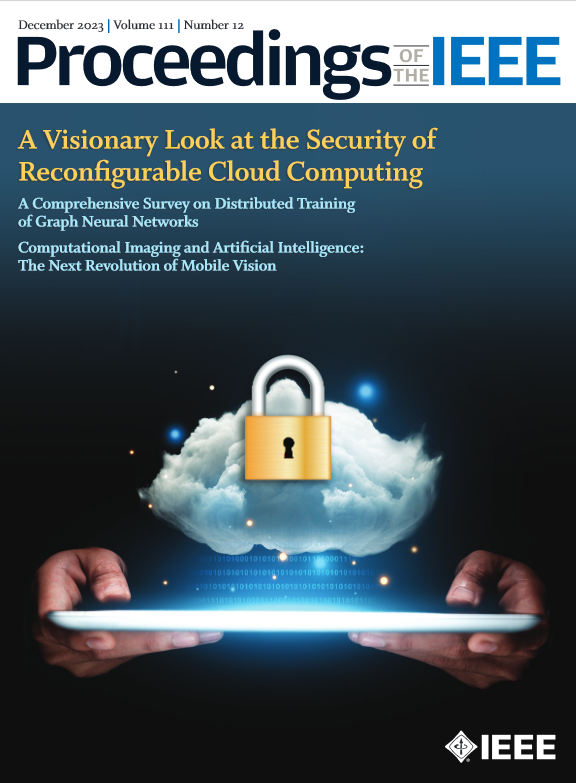Wireless Information and Energy Transfer in the Era of 6G Communications
IF 23.2
1区 计算机科学
Q1 ENGINEERING, ELECTRICAL & ELECTRONIC
引用次数: 0
Abstract
Wireless information and energy transfer (WIET) represents an emerging paradigm that employs controllable transmission of radio frequency signals for the dual purpose of data communication and wireless charging. As such, WIET is widely regarded as an enabler of envisioned sixth-generation (6G) use cases that rely on energy-sustainable Internet-of-Things (IoT) networks, such as smart cities and smart grids. Meeting the quality-of-service demands of WIET, in terms of both data transfer and power delivery, requires effective codesign of the information and energy signals. In this article, we present the main principles and design aspects of WIET, focusing on its integration in 6G networks. First, we discuss how conventional communication notions, such as resource allocation and waveform design, need to be revisited in the context of WIET. Next, we consider various candidate 6G technologies that can boost WIET efficiency, namely, holographic multiple-input multiple-output, near-field beamforming, terahertz communication, intelligent reflecting surfaces (IRSs), and reconfigurable (fluid) antenna arrays. We introduce respective WIET design methods, analyze the promising performance gains of these WIET systems, and discuss challenges, open issues, and future research directions. Finally, a near-field energy beamforming scheme and a power-based IRS beamforming algorithm are experimentally validated using a wireless energy transfer testbed. The vision of WIET in communication systems has been gaining momentum in recent years, with constant progress with respect to theoretical and also practical aspects. The comprehensive overview of the state of the art of WIET presented in this article highlights the potential of WIET systems and their overall benefits in 6G networks.6G 通信时代的无线信息和能量传输
无线信息和能量传输(WIET)是一种新兴模式,它利用可控的射频信号传输实现数据通信和无线充电的双重目的。因此,无线信息和能量传输被广泛认为是第六代(6G)使用案例的推动者,这些使用案例依赖于能源可持续的物联网(IoT)网络,如智能城市和智能电网。要满足 WIET 在数据传输和电力输送方面的服务质量要求,就必须对信息和能源信号进行有效的编码设计。在本文中,我们将介绍 WIET 的主要原理和设计方面,重点关注其在 6G 网络中的集成。首先,我们讨论了在 WIET 的背景下如何重新审视资源分配和波形设计等传统通信概念。接下来,我们考虑了可提高 WIET 效率的各种 6G 候选技术,即全息多输入多输出、近场波束成形、太赫兹通信、智能反射面(IRS)和可重构(流体)天线阵列。我们介绍了各自的 WIET 设计方法,分析了这些 WIET 系统有望提高的性能,并讨论了面临的挑战、未决问题和未来的研究方向。最后,我们利用无线能量传输测试平台对近场能量波束成形方案和基于功率的 IRS 波束成形算法进行了实验验证。近年来,通信系统中的 WIET 前景日益广阔,在理论和实践方面都取得了不断进步。本文对 WIET 技术现状的全面概述突出了 WIET 系统的潜力及其在 6G 网络中的整体效益。
本文章由计算机程序翻译,如有差异,请以英文原文为准。
求助全文
约1分钟内获得全文
求助全文
来源期刊

Proceedings of the IEEE
工程技术-工程:电子与电气
CiteScore
46.40
自引率
1.00%
发文量
160
审稿时长
3-8 weeks
期刊介绍:
Proceedings of the IEEE is the leading journal to provide in-depth review, survey, and tutorial coverage of the technical developments in electronics, electrical and computer engineering, and computer science. Consistently ranked as one of the top journals by Impact Factor, Article Influence Score and more, the journal serves as a trusted resource for engineers around the world.
 求助内容:
求助内容: 应助结果提醒方式:
应助结果提醒方式:


